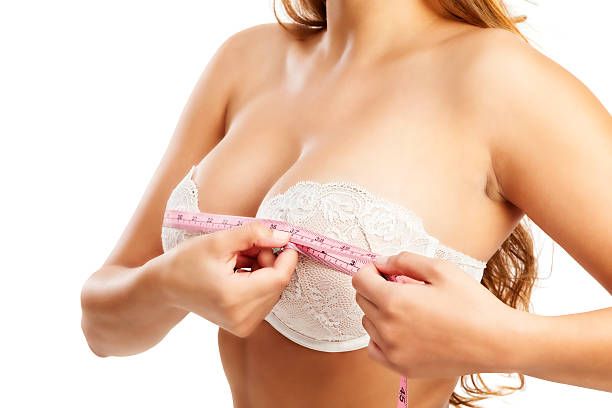“7 Easy Steps to Convert Bust Size to Bra Size Accurately”

Introduction: Understanding Bust Size to Bra Size Conversion
Finding the perfect bra size can seem like a mystery for many women. It’s not just about comfort—it’s about health and confidence too. The relationship between bust size to bra size can often be confusing, but with the right steps, you can easily find your ideal bra size. This guide will walk you through how to measure your bust and convert that measurement into your bra size using 7 proven steps. By the end of this article, you’ll be able to confidently shop for bras that fit perfectly.
Why Bust Size and Bra Size Matter
Wearing the wrong bra size is more than just uncomfortable; it can also affect your posture, lead to back pain, and cause other health concerns. Studies show that nearly 80% of women wear the wrong bra size, which can impact how clothes fit and how we feel in general.
Accurately understanding the correlation between bust size to bra size helps prevent these issues. Finding the perfect bra fit not only enhances your appearance but also improves comfort and well-being.

LSI Keywords:
- Perfect bra fit
- Bra size accuracy
- Measuring bust correctly
How to Measure Your Bust Size
Before diving into the conversion of bust size to bra size, let’s look at how to take accurate measurements. Follow these steps:
Step 1: Measure Your Band Size
- Record the measurement in inches.
Step 2: Measure Your Bust Size
- Stand up straight and wrap the measuring tape around the fullest part of your bust.
- Keep the tape parallel to the ground.
- Record this number as your bust measurement.
By obtaining both these measurements, you’ll have the two numbers needed to calculate your bra size.
Bust Size vs. Band Size
- Your bust size is the measurement around the fullest part of your breasts.
Understanding the difference between band size and bust size is essential when calculating your bra size. The band size is the numerical figure that represents your chest, while the bust size indicates the volume of your breasts.

Table: Difference Between Band and Bust Size
| Difference (in inches) | Cup Size |
|---|---|
| 1 inch | A |
| 2 inches | B |
| 3 inches | C |
| 4 inches | D |
| 5 inches | DD/E |
7 Steps to Convert Bust Size to Bra Size
Here’s the foolproof guide to converting bust size to bra size in just 7 simple steps:
Step 1: Measure Your Band Size
= This is your band size.
Step 2: Measure Your Bust Size
Wrap the tape around the fullest part of your bust and write down the measurement.
Step 3: Calculate the Difference
Subtract your band size from your bust size. The difference corresponds to your cup size, using the chart above.
Step 4: Use the Right Formula
Bra size = Band Size + Cup Size.
For example, if your band size is 34 inches and the difference between bust and band is 3 inches, your bra size would be 34C.
Step 5: Double Check for Comfort
Once you’ve determined your size, try on a bra to check if it feels comfortable and supportive. If it digs into your skin or gapes, you may need a different cup or band size.
Step 6: Adjust for Brands
Different brands may vary slightly in their sizing. You may be a 34C in one brand and a 36B in another. Always check size guides before purchasing.
Step 7: Consider Sister Sizes
If your size isn’t available, you can try a “sister size” (a size with the same cup volume but different band size). For example, 34C and 36B are sister sizes.

Common Bra Sizing Mistakes to Avoid
Many women end up with the wrong bra size due to common measuring mistakes. Here’s what to watch out for:
- Measuring too loosely: Your band should be snug but not tight.
- Incorrectly measuring the bust: Measure around the fullest part of your bust, not above or below it.
- Not considering sister sizes: This is especially important if you’re in-between sizes.
Additional Tips for Bra Shopping and Sizing
While measuring your bust and band size is essential for determining your bra size, there are additional tips to keep in mind when shopping for bras and ensuring the right fit.
Tip 1: Look for Adjustable Straps
Bras with adjustable straps allow you to customize the fit to your body. The straps should support your bust without digging into your shoulders. Straps that are too tight or too loose can throw off the balance of your bra, leading to discomfort.
Tip 2: Check for Underwire Fit
If you’re buying a bra with underwire, ensure the wire lays flat against your chest and follows the curve of your breast. The underwire should not poke or pinch, as this can lead to irritation over time.
Tip 3: Try Before You Buy
Whenever possible, try bras on before purchasing. Sizes can vary significantly between brands, and trying them on allows you to assess the feel and support in real time. Many stores offer professional bra fittings to help you find your correct size.
Tip 4: Consider Different Styles for Different Outfits
Not all bras are created equal. While a traditional full-coverage bra might be ideal for everyday wear, you might prefer a plunge bra for low-cut tops or a sports bra for high-impact activities. Having a variety of styles in your wardrobe ensures you have the perfect fit for any occasion.
LSI Keywords:
- Plunge bras
- Sports bras
- Full coverage
- Underwire support

Common Myths About Bra Sizing
Myth 1: Your Bra Size is Constant
Many women believe that once they know their bra size, it never changes. However, fluctuations in weight, pregnancy, and hormonal changes can alter your bust size and band size. It’s recommended to measure yourself regularly, at least once a year.
Myth 2: Tight Bras Provide Better Support
While a snug fit is essential for support, bras that are too tight can cause discomfort and even health issues such as restricted breathing. Your bra should fit snugly but comfortably, without digging into your skin.
Myth 3: Larger Breasts Don’t Need Underwire
Some believe that larger busts can only be supported by bras with underwire, but this isn’t true. There are many wire-free bras with advanced support structures designed for larger busts.
Myth 4: All Brands Have the Same Sizing
As mentioned earlier, different brands can have slight variations in sizing. You may find that you’re a 34C in one brand but a 36B in another. Always check the size chart or try the bra on before purchasing.
How to Care for Your Bras
Caring for your bras properly can extend their lifespan and ensure they continue to provide the right support. Here are some tips:
- Hand wash when possible: Hand washing your bras in cold water with mild detergent helps preserve the elastic and shape.
- Avoid tumble drying: Heat can break down the elastic in bras, so always air dry them.
- Store bras correctly: Lay them flat in a drawer or hang them to prevent them from losing their shape. Avoid folding the cups inside out.

Bust Size to Bra Size Conversion Cheat Sheet
Here’s a quick-reference guide to converting your bust size to bra size:
| Band Size | Bust Size Difference | Cup Size | Bra Size Example |
|---|---|---|---|
| 34 | 1 inch | A | 34A |
| 34 | 2 inches | B | 34B |
| 34 | 3 inches | C | 34C |
| 34 | 4 inches | D | 34D |
| 34 | 5 inches | DD/E | 34DD/E |
Remember, if your size is between two measurements or feels off, try your sister size for a more comfortable fit.
FAQs on Bust Size to Bra Size
What is the easiest way to convert bust size to bra size?
Measure your band size and bust size, then subtract the band from the bust to determine the cup size.
Why do bras from different brands fit differently?
Every brand uses its own sizing scale. That’s why it’s important to check size charts and possibly try different sister sizes.
Your bra should feel comfortable around the band and cup. The straps shouldn’t dig into your shoulders, and the cups shouldn’t gape or spill.
How often should I remeasure my bra size?
You should measure your bra size at least once a year or after significant body changes such as pregnancy, weight loss, or gain.
Can I measure my bra size at home without a professional fitting?
Yes! . Follow the steps outlined above to ensure accuracy.
What is a sister size in bras?
A sister size is an alternate bra size that keeps the same cup volume while adjusting the band size. For example, 36B and 34C are sister sizes. This can be helpful if your exact size isn’t available.
Should I prioritize band or cup size when bra shopping?
Both are equally important. The band should feel snug but not tight, and the cups should fully enclose your breasts without spillage or gaping.
Conclusion: Finding Your Perfect Bra Size
Converting your bust size to bra size is an essential step for ensuring comfort and support. Wearing the wrong bra size not only affects how your clothes fit but can also lead to discomfort and poor posture. By accurately measuring both your band size and bust size, you can calculate your correct bra size and make informed decisions when shopping for bras.
External Link:
For more insights on how to choose the perfect bra size, check out this comprehensive bra size guide.
For More Blog Visit: VOUCHEEZ



One thought on ““7 Easy Steps to Convert Bust Size to Bra Size Accurately””